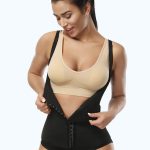Only in September – Victoria’s Secret Chief Marketing Officer revealed that transgender and large size models have no location on their runways for months – the lingerie giant ranked first in the CondéNast and Goldman Sachs 2018 love charts, an annual Research and study the favorites of the millennial and Z generation consumers.
Top brands in this year’s report, including Sephora, Nike and Ulta, can all be considered inclusive, authentic and personal. At least based on 1,489 US consumers aged 13 to 34 and 1,174 CondéNast “It Girls” – defined in the report as “people who regularly collaborate with one or more CondéNast brands are influential in their peers. The group, who likes to discover the brand before others, is the first friend to use the new product and brand ” – to be investigated. The report does not include specific demographic data such as income, size, disability, sex, gender or ethnicity.
But even the high praise of the traditional publisher’s “It Girls” does not protect retailers from the strong opposition that is coming in just two months: when the world is increasingly embracing a range of institutions, L Brands Commentary (Victoria’s Secret Parents) company chief marketing officer Ed Razek revealed that Victoria’s secret does not seem to do the same thing – consumers are not satisfied.
So far, you may have heard of this controversy, which began on November 8th, the day that the fashion show was shot at Pier 94 in New York City. When Vogue asked Razek if the traditional underwear line planned to include plus size and transgender women in his performance, he said that “transgenders” had no place in the show “because the show was an illusion.” Then he went on to say In 2000, Victoria’s secret attempted to assemble a special TV-specific size, but the idea barely caught people’s attention. “No one is interested in it,” he said. “Not yet.”
The CMO’s remarks ignited the online storm, so he apologized to him on Twitter the next day.


